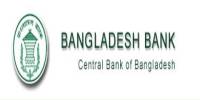Analysis of Financial Ratios of GlaxoSmithKline Bangladesh Limited
GlaxoSmithKline (GSK) is one of the leading multinational companies in the world and the sector it covers is mainly the pharmaceutical industry, besides this it also concentrates on consumer health care products. Although the business portfolio of GlaxoSmithKline covers two major categories of pharmaceuticals and consumer health care but it successfully runs both sector. GSK has a strong Research and Development which works really hard to give best health facilities to the customers and keeps pace with the rapidly changing health care environment very well.GSK is headquartered in London, United Kingdom and the company sells its products in around 70 countries. GSK supplies products to 140 global markets and has over 100,000 employees worldwide.GSK has 180 manufacturing site in 41 countries. Based on published annual reports of the global pharmaceuticals companies, GSK has ranked in 4th Sensodyne position. GSK was established in 2000 through the merger between Glaxo Wellcome PLC and SmithKline Beecham plc. Before getting merged, the Glaxo Wellcome plc and SmithKline Beecham plc had gone through an acquisition and merger respectively. In the pharma sector, GSK has a huge array of products for major disease areas containing asthma, cancer, virus control, infections, mental health, diabetes and digestive conditions. In the consumer healthcare sector, it has also strong product offerings. In this sector, GSK produces and markets oral healthcare and nutritional products, drinks and over-the-counter medicines, including , Boost, Horlicks, Lucozade, Ribena and Gaviscon. GSK has gained leadership in four major therapeutic areas which include anti invectives, central nervous system (CNS) and respiratory & gastro- intestinal/ metabolic. Moreover, GSK is also gaining leadership in the most significant areas of vaccines and it has also an emerging portfolio in a very sensitive segment and that is oncology. It is concentrating a lot in making strong quality oncology products.
Objective of the Study
Primary objective of the study entails the Financial Ratios Analysis of GlaxoSmithKline Bangladesh Limited in order to asses the performance and financial condition of the company.
Organizational Overview
The GlaxoSmithKline Bangladesh Limited
GlaxoSmithKline Bangladesh Limited carries with it an enviable image and reputation for the past 6 decades. GSK Bangladesh as a subsidiary of GlaxoSmithKline plc- one of the world’s leading research based pharmaceutical and healthcare companies continues to be committed to improve the quality of human life by enabling people do more, feel better and live longer. The organization’s principle activities include secondary manufacturing of pharmaceutical products and marketing of vaccines, pharmaceutical healthcare products and healthcare drinks.
GlaxoSmithKline (GSK) is one of the world’s leading research based pharmaceutical and healthcare companies which is committed to improve the standard of human life through enabling them to do more, feel better and live longer.
GSK started its operation in Bangladesh in 1949 and then it was known by its corporate entity “Glaxo”. In Bangladesh, Glaxo then mainly used to work as an importer of Glaxo Group. Here it started operation in Chittagong. Gradually it became manufacturer from importer and in 1967 it settled its factory in Chittagong. This site is still measured as one of the Centers of brilliance in manufacturing and supply Chain network of GSK Ltd.
The global corporate mergers and acquisitions have seen the evolution of the company’s identity in the last 6 decades. Keeping similarity with the corporate entity, the business unit of GSK in Bangladesh also changed its name to Glaxo Welcome Bangladesh from Glaxo because of the Burroughs Welcome acquisition in 1995. Again in 2002 it changed its identity to GlaxoSmithKline Bangladesh Ltd because of the merger with SmithKlineBeecham.
The mega merger of the company enables it to deliver cutting edge advancements in health care solutions. The rentless commitment, setting of ethical standards and quality backed leading edge technology of the company has built a strong relationship between stakeholders and GSK Bangladesh. With the ever committed 680 numbers of total employees all over the country GSK Bangladesh, which now comprises of both Pharma and Consumer, continually strive to meet the GlaxoSmithKline mission.
GSK Bangladesh Facts
- One of the pioneering pharmaceutical companies in Bangladesh, GlaxoSmithKline started its operation in 1967.
- GSK is a secondary producer, principally packaging and distributing advanced pharmaceuticals products produced by its parent company. Consequently, local value added is low.
- In certain novelty products such as asthma and dermatology, GSK enjoys a clear advantage because of its parent’s excellent research efforts and product development. However, a significant part of the GSK’s pharma portfolio comprises of price-controlled “essential products”. So, GSK Bangladesh does not enjoy price advantage for such products.
- Local pharma companies of Bangladesh take advantage of liberal patent regime for least developed countries (LDCs), sanctioned by the WTO, which shall remain in place till 2016. They produce copies of patented products for the local market. As the subsidiary of a global company, GSK does not take advantage of this liberal patent regime and does not produce copy drugs.
- Although GSK has trailed the overall industry in sales growth before a few years at a stretch due to the dominance of local manufacturers, they have managed to recover from that with large growth in the last couple of years. However it appears that GSK is trying to make up for the lack of sales growth through its consumer products business which brought in almost half of the total revenue in 2009. The company has reintroduced various health drink items like Horlicks, Boost, Maltova etc. These lead GSK Bangladesh to achieve almost 232% sales growth in 2009 and 500% growth in 2008.
- The reliance on consumer products may hurt the company’s profitability in future. The health drink market is fairly competitive and is often supplied by non-pharma food companies whose core advantage is better management of retail marketing and distribution systems, promotional events and efficient inventory management. Interestingly, GSK has outsourced their distribution operation which has boosted their profitability.
- Although they do not have any big expansion plan, they seemingly have improved their contract manufacturing revenue dramatically. However it would be interesting to see if that is going to be repeated in future.
- GSK pays regular dividend and the current ratio is 74%, last year it was 85%.So, dividend amount is quite impressive which helps to retain shareholders and to create new ones.
Functional Department of GlaxoSmithKline Bangladesh Ltd
GlaxoSmithKline, Bangladesh, Limited comprises of five major departments. They are given below-
- Human Resources
- Marketing
- Finance
- Medical and regulatory affairs
- Information Technology
Each department of GSK operates in different aspects but they are inter-related as well as complementary to each other. Above mentioned functional departments are worked under the Managing Director. The company’s delegation of authority is decentralized. The main functions of these departments are shown below-
Human Resources
HR department is one of the most active departments in GSK. Previously this department was known as “Personnel Management” department. The company places great emphasis and commitment in developing the human resources as the management body believes that only the best people with professional competencies can contribute successfully to achieve the organization’s goals. GSK has two HR Division, one is at corporate head office and other one is Chittagong factory office. There are four functional sub-departments. They are- HR Development, HR Services, HR Administration and Industrial Relations. First three sub departments are looked after by corporate head office HR division and last one is looked after by Chittagong HR division. There are various functions of HR department of GSK. The main activities of this department are given below:
- Recruiting and training the best pool of employees according to company’s requirement
- Administering smooth workflow in the organization
- Managing demands of the labors in the factory
- Allocating annual holidays
- Organizing motivational programs for employees
- Looking after the wage structures and waivers
At corporate head office six-member HR division takes care of GSK, Bangladesh, LTD. The member and their chain of authority are shown in the organogram below-
Marketing
The pharmaceutical industry of Bangladesh has limited field for marketing. Yet in an age of high competition like todays, firms are heavily spending and effectively practicing marketing. The summary of marketing functions is given below:
- Designing and implementing sales strategies
- Controlling and updating distribution network
- Designing and carrying out promotional programs
- Providing marketing information services
- Carrying out different awareness programs
- Controlling international trades
- Keeping records of data regarding marketing activities
- Building up public communication network
- Looking after all the brands and patents
- Conducting marketing surveys as needed
Finance
GSK gives proper importance to their finance department The financial statements of GSK have been prepared in accordance with Bangladesh Accounting Standards and the relevant requirements of the schedule to the Securities and Exchange Rules, 1987 and of the companies
Act 1994 following the historical cost conversion. The primary tasks of finance department are given below:
- Controlling the accounts
- Completing annual budgets
- Allocating all kinds of payments to the staffs and managers
- Looking after all the revenue and expenses
- Conducting internal audit
- Keeping records through IT
- Facilitating local production costs
Medical and regulatory affairs
Medical and Regulatory Department of GSK, Bangladesh is compiled with required number of doctors and qualified people. This department is primarily responsible to perform tasks like liaison with government for legal issue purpose, communicate with doctors, handling advertisements, etc.
Information Technology
The technical department of GSK is extraordinarily strong. The organization always strives for reaching the global standard of applications of information technology. This company is one of the very few companies in Bangladesh that use world class sophisticated software.
GSK BD’s SWOT Analysis
SWOT is the short form for Strengths, Weaknesses, Opportunities and Threats. It is an analytical Construction to help summarize in a quick and concise way the risk and opportunities for any Corporation across the value chain.
A good SWOT should consider both internal and external factors that influence the organizational operations.
- Factors pertaining to the internal environment of the company. These are usually expressed as Strengths (S) or Weaknesses (W)
- Factors that pertaining to the external environment of the company. These are expressed as Opportunities (O) or Threats (T).
Strength
- GSK is considered as world’s one of the leading pharmaceutical companies because of its performance.
- Efficient, capable and honest workforce
- GSK has intense demand of their product nationally and internationally which helps them to inflate their business
- Considerable financial resources to grow the business
- Proprietary technology and importance patents
- Ability to take advantage of economies of scale
- Better product quality relative to rivals
- Goodwill of the company
- Follows GMR-Good Manufacturing Practice
Weakness
- Underutilized plant capacity
- Higher unit cost relative to key competitors
- Group compliance due to group policy the company has to import raw materials form UK rather from neighbor countries (other than those which are produces locally) resulting in higher cost of production.
- Lack of variety in products
- Low pack size
- Lack of sufficient promotional effort.
- GSK has weaker distribution network and sales force are relatively low compare to competitors.
Opportunities
- GSK as a multinational company has opportunity for expand its investment and has potential growth in Bangladeshi market.
- Expanding the company’s product line to meet a broader range of customer reeds.
- Target and acquire an untapped marketing for vaccines
- Market is significantly large and growing
- Proper utilization of vaccines may result in higher profit.
- Availability of natural resources is the most lucrative opportunity for GSK to work with Bangladesh.
- In Bangladesh, GSK can get labors at a very cheap cost.
- High confidence brand name and quality
Threats
- Adverse shifts in foreign exchange rates and trade policies of government
- Aggressive movement of rivals
- Slow down in market growth
- Growing bargaining power of the end consumers, thus high priced medicine are inconvenient for them
- Costly new regulatory requirements
- Competitors lower prices
- Increasing threats from local competitors.
Project Analysis and Findings
Ratio Analysis
Ratio Analysis is done to measure the financial performance of the company and to understand that in which track the company is going in the future. So, it is basically one technique of assessing the company’s financial performance.
In ratio analysis, financial items of a particular year are compared. Here relationships between the financial items are examined. So, by doing ratio analysis we can judge the various financial aspects of a firm. Then when we compare one year’s ratios with another then we come to know that how much progress was made during the compared period. The ratio analysis is very important to investors, creditors and financial analysts as it helps in decision making.
In order to evaluate GSK’s financial performance, I have also selected ratio analysis as the analyzing tool.
Ratios Analysis of GSK
Current Ratio:
Current ratio is an efficient tool to measure that the organization is capable in meeting up its short term debts or not. Current ratio basically assesses a firm’s liquidity because, if a firm is enough liquid and it has enough resources then it can pay back the all debts that need to cover during 12 months.
Formula: Current Assets ∕ Current Liabilities
Higher current ratio definitely indicates that the firm is highly liquid and able enough to meet the demands of the creditors. Satisfactory current ratio actually varies from industry to industry but in general, if the current ratio lies between 1.5 and 3 then it indicates that the business is healthy.
If the current ratio is below 1then it means that the current liabilities are higher than the current asset, so the firm can face many difficulties while paying back short term debts. On the other hand if the current ratio is too high then it indicates that the firm is not efficient to utilize its short term financing facilities. It may also indicate that the firm has problem in working capital management.
Low current ratios normally indicate that the firm is in trouble to meet current obligation but not necessarily always a low current ratio indicates a huge problem. Firms which have not much currents assets but have a strong long term plans and prospects, they definitely can sort out ways to tackle this problem. There are many firms who have a current ratio under 1 but they are surviving quite well. So, low current ratio does not always mean that the firm is at an alarming stage or very near to be bankrupt but of course it is better to maintain a standard current ratio in order to ensure fewer risks.
From the perspective of short term creditors, a high current ratio is appreciable because it means that the company is eager to pay back current debts within 12 months. A high current ratio also indicates that the firm is much efficient to convert its goods into cash quickly.
In short, current ratio should be compared within the same industry as the benchmark ratio varies from industry to industry.
Quick Ratio:
This ratio assesses the capacity of an organization to recover its current liabilities by using the organization’s quick assets. The asset which can be turned into cash rapidly at an amount that is very close to its book value is known as quick asset.
Quick ratio is also known as Acid-test ratio and liquid ratio. Any quick ratio less than 1 means that the firm can not pay back its current debts.
Formula: (Current Asset-inventory) ∕ Current Liabilities
From the formula, we can see that inventory is not included in the quick ratio, where as it is included in the current ratio. Always a high quick ratio is not considered as good, if it happens that the firm has huge account receivables but those will be collected after a long time and the current liabilities are lesser but needs to be paid instantly then the quick ratio will be higher but still the firm is in a great risk as there is liquidity crisis. On the other hand, opposite thing can be happen when the firm has lesser current assets which will be mature soon and more current liabilities which need to be paid in much later. In this case, the quick ratio will be lower but despite of that the firm is risk free as there is no hurry of payments. Standard quick ratio is 1:1 or above. Higher the quick ratio, the company is more liquid but yes the benchmark figure is different in different industries.
Cash Ratio:
Cash ratio is a ratio of a firm’s cash and cash equivalents to its current liabilities. This ratio is a great measurement of liquidity, if the ratio is high then it indicates that the firm has enough cash to meet up immediate payment demand. Cash ratio is very conservative at its appearance as it does not include any non-cash current assets, only cash on hand and cash equivalents are used to calculate this and for this reason the result is relatively low. A cash ratio higher than .5 is preferable.
Net Working Capital:
Net working capital is the capital by which firms can fund its daily operations. It is one of the standard assessments of liquidity of an organization. This ratio finds out that the firms have excess current assets over the current liabilities or not. If the firm has higher current assets then the ratio will be positive which means the organization has the ability to operate daily business and to cover immediate obligations. Diminishing working capital is an alarm that business is going to face troubles and the worst scenario is the bankruptcy.
Net working capital is also known as working capital and working capital ratio. It gives the investors another clear view of the firm which is the operational efficiency. A firm which is quite efficient in running business and collecting money from customers, the net working capital of that firm will be between 1.2 and 2 because much high working capital indicates that huge money is tied up in inventories and to the borrowers. So, consecutive increases in working capital is a signal of slow collection which is not good for business.
Inventory Turnover Ratio:
In the business, the sufficient volume of inventory is must and we can judge that enough inventory is being produced or not through the inventory turnover ratio. This ratio basically shows that over a period, how many times the inventories are sold and renovated in a business. Generally, a company with high inventory turnover ratio is assumed as strong one. When the inventory level is very high then the ratio will be low which means the inventories are kept idle in the warehouse so definitely it is bad for future growth. Huge amount of inventories also symbolize that the rate of return on the inventory investment is near to zero.
The turnover ratios of the unpreserved goods are normally very high as these are sold out quickly. Although high inventory turnover ratio is always desired but sometimes high ratio may also indicate ineffective buying as lower inventory purchasing will cause the ratio to be high.
Fixed Asset Turnover:
It is the ratio where sales are compared with the fixed assets of the firm. The ratio actually clarifies that the firm is capable enough to use its fixed assets to earn revenues or not. In fixed asset turn over, normally investments on property, plant and equipment are counted and the depreciations of these are subtracted. A high fixed asset turnover is always appreciable as it signals towards the firm’s high productivity. Higher fixed asset turnover means the firm is utilizing its fixed assets and generating revenues from these. On the other hand, low fixed asset is the signal that the firm is not productive and the firm fails to generate sales revenue by utilizing the fixed assets.
There is neither standard guideline nor a best level for fixed asset turnover, so the evaluation and comparison can be done by calculating fixed asset turnovers of past years of a particular organization. As there is no average figure, so progress of the firm can also be assessed through comparing fixed asset turnovers of different firms of the same industry. High fixed asset turnover means that less money is allocated to the fixed asset portion, where as too low fixed asset turnover means that additional fixed asset investment has been made which is unnecessary. So, the investment in fixed assets should be in the right amount, neither more nor less and most importantly it should be monitored that the assets are being utilizing properly thus they can contribute to high revenues.
Debt to Equity Ratio:
The debt to equity ratio is the best way to measure the financial leverage of any firm; it is one of the most important ratios of any firm. Higher the ratio, higher the debt amount of the firm, therefore higher financial leverage.
If the ratio is lower, the leverage of the firm is also lower. It presents the parentage of a company’s asset that is financed by debt versus equity. It is a widespread quantity of the long term capability of a firm’s business and along with current ratio, a measure of its liquidity, or its ability to cover its expenses. So, it often takes only long term debts instead of total liabilities.
Sometimes, it happens that higher debt leads the firm to gain higher debt as cost of debt is lower than the cost of equity but it is not good for the firm to always apply this technique because if the firm fails to meet up the obligations of debts ten the firm can reach even in the stage of the bankruptcy. So, the firms should be much analytical and attentive when to take higher debts. Higher debt can lead to both higher gain and risk, so firms should be very careful while taking financial leverage.
Time Interest Earned Ratio:
Time Interest Earned ratio is basically a solvency ratio which assesses that firm has the capacity or not to pay back all its loans. This ratio is also known as interest coverage ratio. Through this ratio it can be judged that how many times a firm can face its interest expenses that are due to the taken borrowings. If the ratio is higher, then it means that the firm has the ability to payback its loans but if the amount is too high then it mean that the firm is unnecessarily using the maximum portion of earnings to repay the loans. So, it means that in this case the company can afford using low portion of returns in repayment of loans and can reinvest the earnings on more volume in order to ensure high growth. On the other hand, if the ratio is less than 1 then it means that the firm is not achieving much profit to meet up the debt obligations.
Gross Profit Margin:
Profitability depends on a large number of policies and managerial decisions of a firm. All the effects of liquidity, asset and debt management on the income s judged through the profitability ratios. Gross profit Margin, Profit Margin, Return on Assets and Return on Equity are the mostly used profitability ratios.
The relationship of sales and cost of goods sold is assessed through gross profit margin. High ratio indicates a secure position for the company. Low profit margin signals towards less safe position because it means that sales are diminishing, therefore generating low revenues. It is also a great tool of identifying pricing strategy and cost control. It helps to cut cost by presenting that cost is relatively low or high than the revenues. So, from the low profit margin we actually get the idea that I which way we need to control our costs.
Operating Profit Margin:
This ratio is another important tool to measure the profitability of the firm. Firstly, the operating profit means the profit which is gained through the core business operations, not from the financing or investing activities. This profit is also known as Earnings Before Interest and Tax (EBIT). Operating Profit= Operating Revenue-Cost of Goods Sold- Operating Expenses-Depreciation and Amortization.
This operating profit is used to calculate the operating profit margin which clarifies that how efficiently and effectively the firm is doing operations and making money. High operating profit margin indicates that the firm is good at merchandising activities, they are low cost producers so capable to offer cheap price to the customers and this manner they are making high profit than the competitors. The operating profit margin, also clarifies another major thing that is, how much operating profit a company makes on each dollar of sales. Higher operating profit margin indicates a healthy business. In order to judge that the operating profit margin is impressive or not, we need to observe that the ratio is increasing over time or not, if the trend is increasing then definitely the firm’s efficiency to make profit from sales is increasing.
Price Earnings Ratio or P/E:
This is the ratio of market value to EPS. Through this ratio, the recent trading price of the firm is compared with its EPS.
The P/E ratio actually represents the expectation of investors about the firm. Higher P/E means that investors have high expectations about the firm’s future growth and that’s why they are interested to invest.
The P/E ratio has also another meaning, sometimes it also indicates that how much the investors are willing to pay for per dollar of earnings. So, in this case it is referred as multiple. The average P/E ratio is 20-25 times. Comparing P/E ratio within firms of same industry gives the idea that which firm is performing well.
Findings
The factors I have identified through my analysis are:
- GSK has a very little amount of long term debt
- GSK earns a significant amount every year, its current ratio and turnover ratios are satisfactory which indicates that GSK is performing well.
- GSK has enormous production capacity but it is not fully utilizing this opportunity and it is not producing cheaper products than the competitors.
- GSK has a policy, that the MPOs can not pursue the doctors to recommend its drugs and as a result it is lagging behind in this sector.
- GSK’s distribution channel is not that much strong compare to the local firms.
- GSK is not under capitalized which means GSK does not only depend on borrowed capital and the creditors. So its owned capital is able to meet up the operational costs. So, obviously GSK is financially solvent.
Recommendations
- Although GSK is maintaining a fair current ratio, but from 2009 to 2012 it is gradually decreasing which is an indication that current liabilities are increasing. So, GSK must concentrate on this issue and should be careful to control the debts.
- The debt ratio of GSK is not so high but it is increasing gradually and in 2012 it was above .52. Although the figure is no so violent but if it is below .5 then more secured condition is expressed. So, from now GSK should check that its dependency on the trade creditors is increasing or not. If it is increasing then GSK must take effective steps to reduce it.
- There is an upward trend in debt to equity ratio, again it is pointing out that debts are increasing. Although higher debts can give financial leverage but there is also a risk of meeting up the debt obligations. So, GSK should realize that higher debts can lead it to higher risk. From now it should be little conservative in case of taking debts.
- Most of the profitability ratios are decreasing. So, it means the growth is lowering day by day. In this case GSK must needs to think that how more profit can be achieved and needs to find ways to capture the significant portion of the market thus profit level goes up.
- In 2011 the sales growth was much higher than 2010 and in 2012 this trend was maintained. Although it’s a very positive indication but GSK should not forget that it can increase the market share more. So, in this regard it should increase the promotional activities to capture the consumer mind more.
- Market coverage can be expanded through reaching the every corner of the country. GSK needs to adopt more aggressive strategy in order to beat the competitors.
- GSK needs to change its policy of not pursuing the doctors to prescribe its drugs, otherwise it will not be able to cope up with the local giants.
Conclusion
Financial ratios analysis is a part of financial statement analysis and through this we can have knowledge about the company’s past and present performance. Most importantly it gives us an idea that what can be the company’s performance in the future. Ratio analysis involves the calculation of statistical relationship between data and it is a very popular technique of financial statement analysis. Throughout my analysis, I came to know about the financial strength, operational efficacy and management efficacy of GSK. I have realized that GSK is performing well, it is financially solvents but there some threats which are increasing recently. If the risks or threats can be handled properly then definitely GSK can survive successfully as like the previous years.
















